Table of contents
The macadamia nut ( Macadamia spp.) is one of the tastiest nuts in the world. You can eat it raw, cooked or roasted - preferably in organic quality.
Use of macadamia nuts in the kitchen:
The macadamia nut is known for its dark brown, smooth to rough, extremely thick and hard shell, which can only be cracked with a special nutcracker (e.g. spindle nutcracker) - and a force of 1800-4000 Newtons 1 - which is why the nuts are usually sold shelled. The two macadamia species Macadamia tetraphylla and Macadamia integrifolia are economically important. 2,3 The cream-colored kernels that appear after the shells are broken open have a soft and tender consistency and a fine, almond-like, slightly sweet taste.
Macadamia nuts are eaten raw or roasted and often salted or seasoned as a snack between meals or as an aperitif. Roasted macadamia nuts or macadamia nuts dipped in chocolate are also popular. Macadamia nuts are also used as an ingredient in fillings, creams, spreads (e.g. with dark chocolate), tarts, pastries or cakes (e.g. carrot cake, brownies, banana bread). The nuts can also be used to make fine biscuits, cookies and biscuits or even creamy ice cream (e.g. macadamia caramel ice cream). The nuts also go well with fruit salads or vegan rice pudding. The nuts can also be used to make a vegan, plant-based milk alternative and an oil. How can you eat macadamia oil? The nutty oil is a suitable vegan butter alternative for baking, but also goes wonderfully over salads and fried vegetables.
Macadamia nuts also taste great in salty dishes, such as in sauces over pasta, in vegetable stir-fries (especially recommended with broccoli) or in salads such as lamb's lettuce or rocket with pomegranate seeds or oranges. Raw vegan coleslaw or aperitif cucumber rolls also benefit from the delicate texture and fine taste of the nuts. Macadamia nuts can also be used to make vegan spreadable cheese or cream cheese, veganaise, pesto or hummus. You can also make a puree with the nuts, which goes wonderfully with hearty, autumnal dishes such as red cabbage, chestnuts or Brussels sprouts.
Recipe for a vegan raspberry-macadamia raw food cake:
Ingredients: For the dough: 400 g raw macadamia nuts (organic?), 200 g sunflower seeds, 10 Medjool dates, ¾ cup unsweetened cocoa powder (raw), ¾ cup desiccated coconut, 2 tbsp water. For the filling: 2 avocados, 10 Medjool dates, ¾ cup unsweetened cocoa powder (raw), 1 pinch of salt, 3 cupsraspberries.
Preparation: Roughly chop the dates (pitted) and process them with macadamia nuts, sunflower seeds, cocoa powder and coconut flakes in a food processor or blender. Add water and mix to form a homogeneous, sticky dough. Divide the dough into three parts, shape each into a ball and roll them out flat (1 cm thick) on a sheet of baking paper - either round or rectangular. The dough should not crumble when rolling it out. If it does, put it back in the food processor and gradually add water. While you are preparing the filling, put the dough layers in the freezer. Process the avocados, dates, cocoa powder and salt with a hand blender to form a cream. Place the first layer of dough on a cake plate, spread a third of the cream on top and scatter 1 cup of raspberries on top. Carefully add the second layer of dough, cream and raspberries on top and repeat a third time. Serve the vegan, raw raspberry macadamia cake immediately.
Vegan recipes with macadamia nuts (raw) can be found under the note: " Recipes that have the most of this ingredient ".
| Not only vegans or vegetarians should read this: Vegans often eat unhealthily. Avoidable nutritional errors. |
Shopping - where to buy macadamia nuts?
Macadamia nuts are always available in most supermarkets (e.g. Coop, Migros, Spar, Aldi, Lidl, Rewe, Edeka, Hofer) and occasionally in other supermarkets (e.g. Denner, Volg). Organic quality nuts can be found in many supermarkets as well as in organic supermarkets (e.g. Denn's Biomarkt, Alnatura). Macadamia nuts are usually sold shelled in stores. Shelled macadamia nuts are only available in online shops. The nuts can be found raw, but often also roasted and salted.
The term "raw" for nuts that are advertised as raw food in the trade usually only refers to the omission of the roasting process. However, macadamia nuts are dried after harvest, which often takes place at temperatures of over 42 °C (see the chapter "Cultivation - Harvest"), and are no longer considered raw food in the strictest sense.
Found in the wild:
Only in Australia can the macadamia nut be found in the wild in certain parts of the rainforest. 2
Storage:
Raw macadamia nuts without shells start to rot relatively quickly due to their high content of unsaturated fatty acids, thereby losing quality and flavor. They should therefore be protected from heat, moisture, light and air and stored in an air-packed container in a cool, dry, dark place (e.g. in a kitchen cupboard or dry cellar compartment). The shelled nuts have a shelf life of 5-6 months at best - but eating them sooner is recommended due to their valuable nutrients. The nuts can also be frozen, which extends their shelf life to about a year.
Macadamia nuts: Ingredients - nutritional values - calories:
Macadamia nuts (raw) are very high in calories with 718 kcal per 100 g. The kernels also contain a lot of oil: 76 g of fat per 100 g of macadamia - that makes up 108.2% of the daily fat requirement. Of the 76 g of fat, 12 g are saturated fats. 4 The predominant saturated fatty acids are palmitic acid, stearic acid and behenic acid. 5 Macadamia nuts have a good ratio of omega-6 to omega-3 fatty acids (LA:ALA) at 6:1. In comparison: for cashews, the ratio is at least 48:1 and sometimes even goes up to 130:1. Among nuts, only walnuts are better - with a ratio of 4:1. From a health perspective, it is worth using macadamia or walnuts instead of cashews, as you can replace them practically anywhere - it's just less advantageous in terms of price.
Carbohydrates are present at 14 g and fiber at 8.6 g per 100 g. Proteins are moderately present at 7.9 g/100 g. 4
The trace element manganese is found in abundance in raw macadamia nuts. The content of 4.1 mg/100g (207% of the daily requirement) is comparable to that of pecans (4.5 mg/100g) anddried pumpkin seeds (4.5 mg/100g). Even more manganese is present in pine nuts at 8.8 g/100g. 4
Do macadamia nuts contain vitamins? 100 g of raw macadamia nuts also contain 1.2 mg of thiamine (vitamin B1) (109% of the daily requirement). Unpeeled hemp seeds (1.3 mg/100g) and sunflower seeds (1.5 mg/100g) contain a similar amount. Yeast flakes contain a particularly high amount of thiamine at 41 mg/100g, but it must be remembered that only small amounts are usually used. 4
The macadamia nut (raw) also contains 0.66 g of the amino acid phenylalanine per 100 g (43% of the daily requirement). Hazelnuts (0.66 g/100g) and walnuts (0.71 g/100g) contain a similar amount. At 1.7 g/100g, dried pumpkin seeds contain about 2.5 times as much phenylalanine. 4
The complete ingredients of macadamia nuts (raw), the coverage of the daily requirement and comparison values with other ingredients can be found in our nutrient tables. In the article Nutrients explained you will get a detailed insight into the topic.
Health aspects - effects:
Are macadamia nuts healthy? Macadamia nuts are rich in polyphenolic flavonoids, among other things. These have an antioxidant effect and can prevent arteriosclerosis. In addition, macadamia nuts are particularly heart-friendly due to the nature of their fats, which lower cholesterol levels and improve blood flow in the coronary arteries. 6 A study from 2003 was able to show that eating macadamia nuts as part of a healthy diet positively changes the plasma lipid profile of men with hypercholesterolemia despite a high-fat diet. 7
Palmitoleic acid is a monounsaturated omega-7 fatty acid that occurs naturally in high concentrations in macadamia nuts. Palmitoleic acid is believed to have several health-promoting functions, particularly the ability to increase insulin sensitivity and reduce the risk of diabetes. 3
Macadamia nuts are best eaten raw, as the valuable health benefits are retained without roasting. Roasting and salting are also unnecessary, as the nut has a fine taste even raw and unsalted.
Dangers - intolerances - side effects:
The macadamia nut is one of the most fatty and energy-rich nuts. 6 They should therefore only be consumed in moderation.
In addition, macadamia nuts, like other nuts, can cause allergic reactions.
Occurrence - origin - ecology:
Macadamia nuts originally come from the rainforest on the east coast of Australia. 2 The nuts of the wild macadamia trees served as a source of food for the indigenous people of the Australian subcontinent. 8 In the 1850s, the German-Australian doctor and botanist Ferdinand von Müller discovered the macadamia nut and decided to name the genus after his colleague John Macadam. 9
Today, macadamia nuts are grown in Australia and other tropical and subtropical regions around the world, such as Hawaii, New Zealand, China, South Africa, South America and Southeast Asia. 1
Growing in the garden or as a potted plant:
If you want to have your own macadamia tree, you can either start by growing a seed or, more simply, by using grafted plants. The plants need a location in full sun to partial shade, protected from the wind. At the beginning of spring, plant the plant as deep in the soil as it was in the pot. Waterlogging should be avoided in any case to prevent the trunk from rotting. Not all flowers produce nuts, but those that do produce thick green shells that turn brown and begin to crack when ripe. 10
Cultivation - Harvest:
The optimal temperature for the plants is around 26 °C. The trees can survive short, mild frosts down to -6 °C, but longer periods of low temperatures can damage them. 8
The macadamia tree takes seven to ten years to bear its first fruit. Then, between March and September, it can produce yields of up to 50 kg. The nuts are collected in several stages by hand or with specially built harvesting machines. 11,12 Careful drying is a crucial step in macadamia processing to maximize quality. When harvested, the nuts have a moisture content of up to 30%. Drying, which lasts up to three weeks, reduces the moisture content to around 1.5%. The kernel shrinks away from the inside of the macadamia shell, so that the shells can be opened with special cracking machines without damaging the kernel. 12
A typical drying process is at room temperature or 30 °C for 4-5 days, followed by 38 °C for 2-3 days until the moisture content is below 8%, and then 50 °C for 4-5 days and 60 °C for 1-2 days until the moisture content of the kernels is 1-1.5%. However, a standard drying method has not been established. 15
Ecological aspects:
The production of macadamia nuts uses a lot of water. For 860 g of nuts, around 1,000 litres of water are needed. 13
Animal protection - species protection - animal welfare:
Is macadamia poisonous? All macadamia species accumulate cyanogenic glycosides in their kernels, but in very low concentrations in the case of commercial nuts. Toxicosis caused by macadamia nuts has so far only been observed in dogs. However, the mechanism of their toxicity in dogs is currently unclear. Clinical signs generally appear within 12 hours of ingestion and can include weakness, depression, vomiting, ataxia, tremors, hyperthermia, abdominal pain, lameness, stiffness and pale mucous membranes. 14 The negative effect on cats has not yet been scientifically proven, but is probable.
The macadamia species are classified as threatened under Queensland, New South Wales and Commonwealth legislation and are on the International Union for Conservation of Nature and Natural Resources (IUCN) Red List of Threatened Plants. 2
General information:
The name macadamia refers to four plant species native to the Australian states of New South Wales and Queensland, including Macadamia integrifolia (macadamia nut), Macadamia jansenii, Macadamia ternifolia (three-leaf macadamia nut) and Macadamia tetraphylla (rusty-shelled macadamia nut). They belong to the family Proteaceae. Two species are commercially important for their nuts: M. integrifolia and M. tetraphylla. The other two, M. jansenii and M. ternifolia, produce nuts with high levels of cyanogenic glycosides, which are toxic and therefore unsuitable for human consumption. 3
The macadamia is a popular nut worldwide due to its high oil content, quality and distinctive taste. 1.8 Due to its popularity and the complex production process, the "queen of nuts" is one of the most expensive nuts in the world.
Alternative names:
The macadamia nut is sometimes found under the name Queensland nut. Incorrect spellings (e.g. macadamia nuts, macadamia nuts, macadamia nuts, macadamia nut, macadamia nut, macademia nut, macademia) creep in.
In English, macadamia nuts are called macadamia nuts, Australian nuts or Queensland nuts.
Keywords for use:
Macadamia oil is also used in cosmetics. It is often an ingredient in moisturizing body creams and shampoos.
Literature - Sources:
Bibliography - 15 Sources
| 1. | Lin J, Zhang W, Zhang X, Ma X, Zhang S, Chen S, u. a. Signatures of selection in recently domesticated macadamia. Nat Commun. 2022;13(1):242. |
| 2. | Wildmacadamias.org.au Why conserve Macadamias? |
| 3. | Hu W. Fitzgerald M. Topp B. Alam M. O'Hare TJ. A review of biological functions, health benefits, and possible de novo biosynthetic pathway of palmitoleic acid in macadamia nuts. Journal of Functional Foods. 2019;62:103520. |
| 4. | USDA United States Department of Agriculture. |
| 5. | O’Hare TJ, Trieu HH, Topp B, Russell D, Pun S, Torrisi C, u. a. Assessing fatty acid profiles of macadamia nuts. HortScience. 2019;54(4):633–7. |
| 6. | Roger JDP. Heilkräfte der Nahrung. Advent-Verlag: Zürich. 2006: 78-9. |
| 7. | Garg ML, Blake RJ, Wills RBH. Macadamia nut consumption lowers plasma total and LDL cholesterol levels in hypercholesterolemic men. J Nutr. 2003;133(4):1060–3. |
| 8. | Stephenson R. Macadamia: Domestication and Commercialisation. Chronica Horticulturae. 2005;45(2):11-5. |
| 9. | Verma MK. Yadav A. Deepak NG. Usha K. Kumar S. MACADAMIA NUT (Macadamia integrifolia). In book: Minor Fruits: Nutraceutical Importance and Cultivation. Jaya Publishing House, Delhi. 2017:583-607. |
| 10. | Gardenerspath.com HOW TO GROW AND CARE FOR A MACADAMIA NUT TREE. |
| 11. | Australian-macadamias.de Dürfen wir vorstellen: Der Macadamia Baum. |
| 12. | Australianmacadamias.org Growing and Processing Macadamias. |
| 13. | Themacadamia.co.za Do we have enough water for all our macs? |
| 14. | Cortinovis C, Caloni F. Household food items toxic to dogs and cats. Front Vet Sci. 2016;3:26. |
| 15. | Wall MM. Improving the quality and safety of macadamia nuts. Chapter 12. 2013: 274‐296. In: Harris LJ (ed.). Improving the safety and quality of nuts. Woodhead Publishing Series in Food Sciences, Technology and Nutrition Number 250, Woodhead Publishing, Cambridge, UK. |

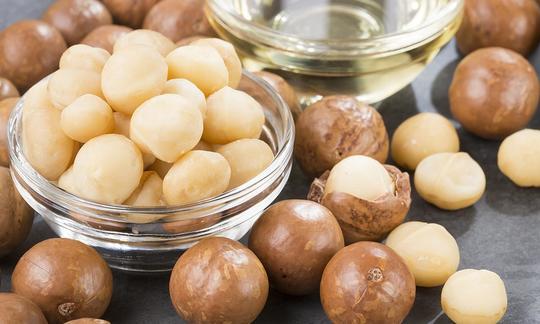

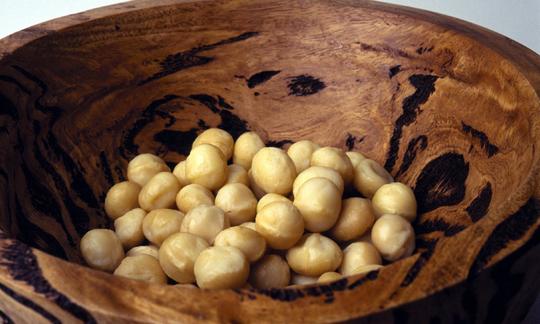

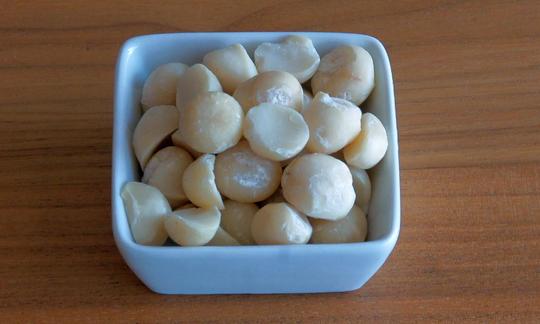

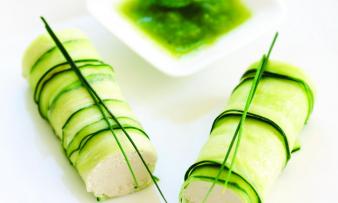
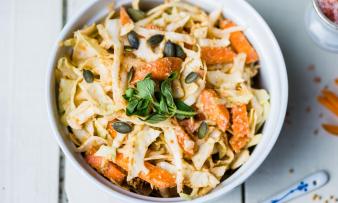


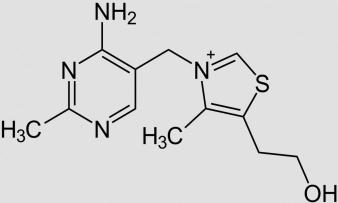



Comments